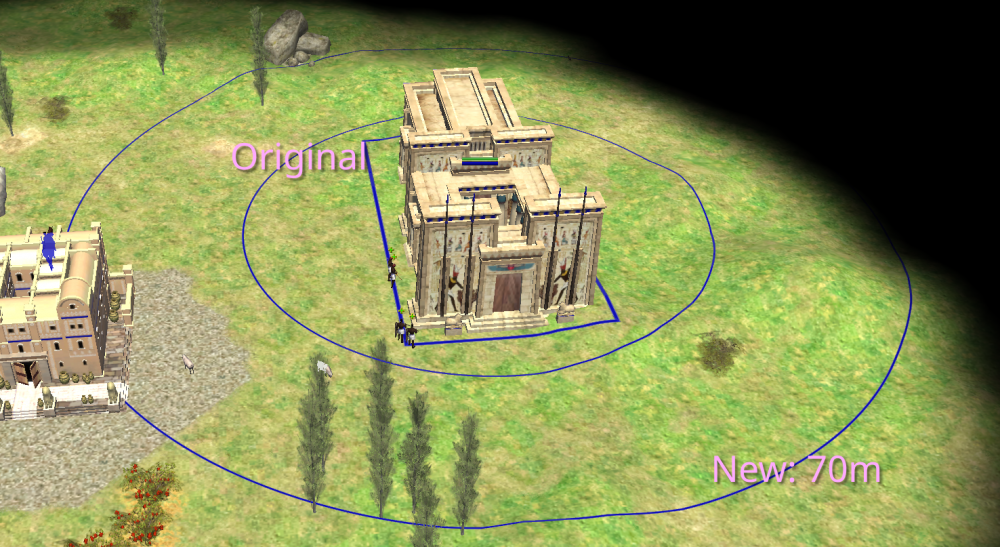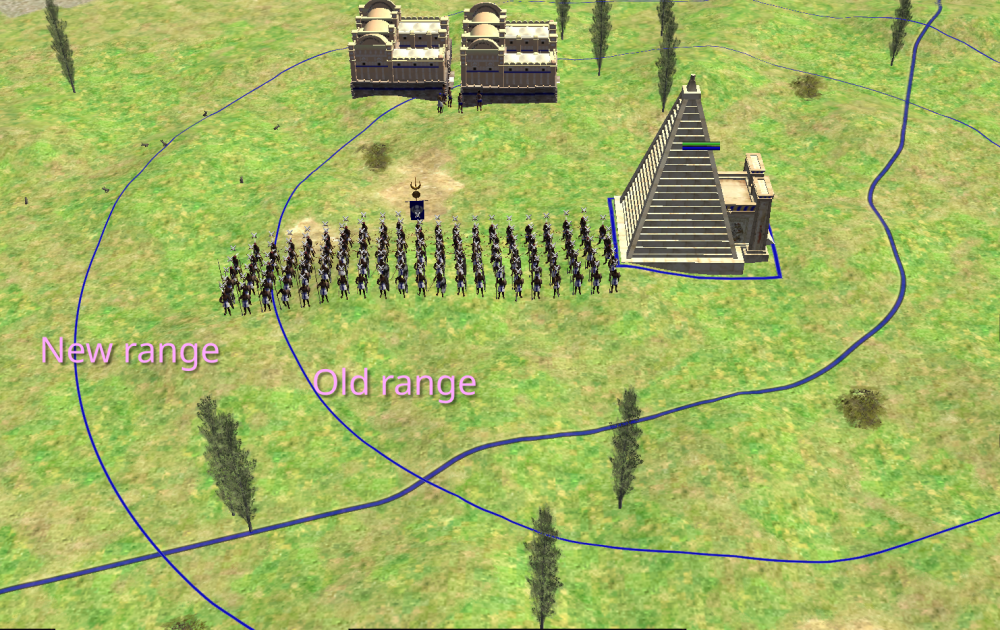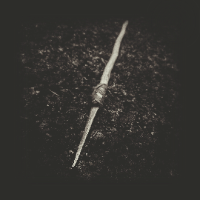All Activity
- Past hour
-
@Stan, Yes, it's here with the name "pyrogenesis.exe".
- Today
-
What are the grounds for poison damage ?
-
Je ne vois pas 0 A.D. dans la liste.
-
Gurken Khan, I speak French. Here is for the firewall : Pour Windows Defender, je ne sais pas.
-
.thumb.jpg.b21ca1d0c15fb56b42c39b25a0a40815.jpg)
Archaeological potpourri
Genava55 replied to Gurken Khan's topic in Introductions & Off-Topic Discussion
https://www.labrujulaverde.com/en/2025/05/evidence-of-the-use-of-a-polybolos-the-mythical-greek-repeating-weapon-at-pompeii-in-89-bce-discovered/ Evidence of the Use of a Polybolos, the Mythical Greek Repeating Weapon, at Pompeii in 89 BCE Discovered A team of Italian researchers has discovered markings on the walls of Pompeii that could be the first known evidence of the use of an ancient and sophisticated weapon of war: the polybolos, a type of automatic crossbow capable of launching multiple arrows without needing to be reloaded, similar to modern machine guns. Its invention is attributed to Dionysius of Alexandria, a Greek engineer who worked in the arsenal of Rhodes in the 3rd century BCE. It wasn’t a crossbow in the traditional sense but used a torsion mechanism based on bundles of twisted sinew, and we only know about it from the description left by Philo of Byzantium, who wrote between 280 and 220 BCE. Philo recounts how one of these weapons was found and provided a detailed description of the gears that powered a chain drive to position bolt after bolt into its firing groove. This is the earliest known application of such a mechanism. The study published in the Nexus Network Journal focuses on a section of the northern wall of Pompeii near the gates of Vesuvius and Herculaneum, where the researchers, led by Adriana Rossi from the University of Campania, found and analyzed small holes in the stones. These marks are square or diamond-shaped and do not match the impact patterns of stones launched by conventional catapults. Instead, they appear to have been caused by arrows or metal projectiles. They appear in groups of four or five, as if the projectiles that caused them had been fired in bursts, something difficult to achieve with handheld weapons or traditional crossbows. The precision and frequency suggest the use of a repeating machine, the researchers assert, believing that they could be the work of a polybolos used during the siege of Pompeii in 89 BCE, when the troops of the Roman general Sulla conquered the city. Although no physical remains of the weapon have been found, the markings on the walls would match its historical description. To confirm their theory, the team used 3D scanning techniques and digital reconstructions. Through virtual models, they calculated the speed and force of the impacts, estimating that the arrows that could have made the marks reached a speed of around 109 meters per second, a rather surprising speed for the time. They also confirmed that the depth and shape of the holes matched models of Roman arrowheads kept in European museums. Why Shoot Arrows at the Walls? But why would the Roman army besieging the city have fired arrows at the stone walls instead of at the defenders? The researchers offer two fairly evident theories. The first is that they simply missed their shots—that is, they were aiming at soldiers on top of the wall but missed, perhaps because the weapon was hard to handle or simply wasn’t as effective as it should have been. And the second is that they were simply testing, practicing and calibrating the polybolos before using it against the enemy. In this regard, an episode of the popular show MythBusters aired in 2010 built and fine-tuned a replica of the polybolos based on Philo’s description, concluding that its existence as a historical weapon was plausible, despite being prone to constant mechanical failures. The team now plans to analyze more sections of the walls of Pompeii and collaborate with museums to cross-reference their findings. They also hope this discovery will attract interest to Pompeii not just as a city frozen in time, but also as a battlefield where Roman military engineering left its mark. SOURCES Rossi, A., Gonizzi Barsanti, S. & Bertacchi, S. Use of Polybolos on the City Walls of Ancient Pompeii: Assessment on the Anthropic Cavities. Nexus Netw J 27, 243–272 (2025). doi.org/10.1007/s00004-024-00803-x Reconstruction of a polybolos. Credit: Diels and Schramm 1919 / AR and archives of Archeotecnica / archeotecnica.com -
What language(s) do you speak? So, that's the router. How about the firewall? And the antivir? I had to set exceptions for 0ad there.
-
Marktian5 joined the community
-
Historical reduces their pierce dmg, but gives them poison dmg which bypasses resistances
-

wxwidgets error while building
hyperion replied to Duck's topic in Game Development & Technical Discussion
The package manager knows which files belong to a package, there surely is a command to list them, check what wx-config-* wxwidgets-gtk3 installed. -
Hello, I checked my router, and I do have UPnP port 20595 open. So, I don't understand why it's not working ?
-
yoyomani joined the community
-
rightcheckin5 joined the community
-
Regarding @Barcodes proposal on pyramids, I've tested some values and I've made a pull request with the following changes: 1. Temple of Amun's healing range increases from 40m to 70m. This is because the building itself occupies most of the area within its aura, so there is not much space left for the units to be healed, espcially on the corners. Increasing to 70m gives ample space for units to stand nearby and heal. 2. Large Pyramid aura range increased to 100m. This radius is approximately the width of a late game army (120~130) units in close order formation. The previous 70m is too small to affect the whole army, especially considering the size of the pyramid itself and the likelihood of buildings / complicated landform around it. 100m should give sufficient space for the aura to have a strategic impact. However, 140m or greater values might be too OP, so let's be conservative here. The idea of the circular aura is being able to use this building to give you an advantage while invading an enemy bordering you; you are covered by the aura even when you are inside enemy territory. Similarly, it provides you with an advantage at defending against incoming attacks, which is what Kushites are weak at. https://gitea.wildfiregames.com/0ad/0ad/pulls/7963
-
We don't want A24 to return though 220 pop for kushites might be too OP, because they have mercs to save themselves. The other 220 pop civs all have fatal flaws that make this necessary. Another idea is to give Kushites a 5% pop bonus, so they become 210 pop limit in a 200 pop game.
-
fnbvnmf joined the community
-
I made a pull request to give the Numidian Skirmisher cav 10% walk speed bonus without changing anything else. This raises their walk speed from 16.2m/s to 17.8m/s, but no change to running speed or any other UnitMotion components. I haven't seen much opposition to the idea here and testing the change, I found: - Increase in speed is good for hunting and scouting. - If you are in an outnumbered jav cav vs jav cav fight, you can escape while loosing less, but still taking some damage. - You are still slower than spear cav but only slightly - your jav cav can still be chased down by spear cav but they take a bit longer to catch up to you - easier to flee from spear cav spammers. - I knew you'd try to formation dance so I made no change to the run speed https://gitea.wildfiregames.com/0ad/0ad/pulls/7961
-
.thumb.jpeg.6593e9caa97375b0d0fe3e8d0b0480a4.jpeg)
wxwidgets error while building
Seleucids replied to Duck's topic in Game Development & Technical Discussion
This flag worked. I could build the game without atlas. [user1@LAPTOP ~]$ sudo pacman -Q | grep "wx" wxwidgets-common 3.2.8-3 wxwidgets-gtk2 3.2.4-1 wxwidgets-gtk3 3.2.8-3 -

Introducing the Official community mod for Alpha 26
Stan` replied to wraitii's topic in Gameplay Discussion
You can download the community mod from inside the game But here you go gitea.wildfiregames.com -
Introducing the Official community mod for Alpha 26
BeTe replied to wraitii's topic in Gameplay Discussion
any link to Gitea? -
Hernandez joined the community
-

wxwidgets error while building
hyperion replied to Duck's topic in Game Development & Technical Discussion
it means wx-config-gtk3 no longer exists on your system or is no longer in PATH. You can use an absolute path for WX_CONFIG, but it must point to the wx-config corresponding to your desired wx install. -

wxwidgets error while building
Stan` replied to Duck's topic in Game Development & Technical Discussion
--without-atlas IIRC. You can see all the options in build/premake/premake5.lua. What's the package name for wxwidgets on your system? -
@Vantha, Thanks for the link
-
@Gurken Khan, Yes, thank you. But it's complicated for me; I don't know English. I have to translate the language every time.
-
It would be easy, that not all civilizations have CS. Most civs had levies.
-
Buff archers and kush will be good again
-
.thumb.jpeg.6593e9caa97375b0d0fe3e8d0b0480a4.jpeg)
wxwidgets error while building
Seleucids replied to Duck's topic in Game Development & Technical Discussion
I have also encountered this problem now. It occured after an Arch Linux update. I try to run ./update-workspaces, and now I get this error: [user1@LAPTOP workspaces]$ export WX_CONFIG=wx-config-gtk3 [user1@LAPTOP workspaces]$ ./update-workspaces.sh Premake args: WX_CONFIG must be set and valid or wx-config must be present when atlas is enabled current value: wx-config-gtk3 ERROR: Premake failed I used the export environment variable as described by the build instruction: export WX_CONFIG=wx-config-gtk3 But seems like wx-config-gtk3 is no longer accepted. I changed it to gtk2 but still the same error. I also tried to disable atlas, but magically, the --disable-atlas flag has been removed from update-workspaces.sh ! What's the equivalent command for it now? I don't want the Atlas right now. - Yesterday
-
https://gitea.wildfiregames.com/0ad/0ad/wiki/FAQ#what-shall-i-do-when-joining-multiplayer-matches-fails-with-an-error-message Also, Alpha 27.1 will include a patch fixing the automatic creation of port forwardings via UPnP, which should resolve the issue for some players entirely (to be precise, for those with UPnP enabled on their router).
-
Maybe try to catch a dev on IRC https://www.wildfiregames.com/irc.html
-
yeahhh, either way, any decent player who sees the pyramid will just avoid it and i'm pretty sure all your units can't be on the pyramid if you have a 100+ army so it's quite pointless really and it's not cheap either
-
Latest Topics







